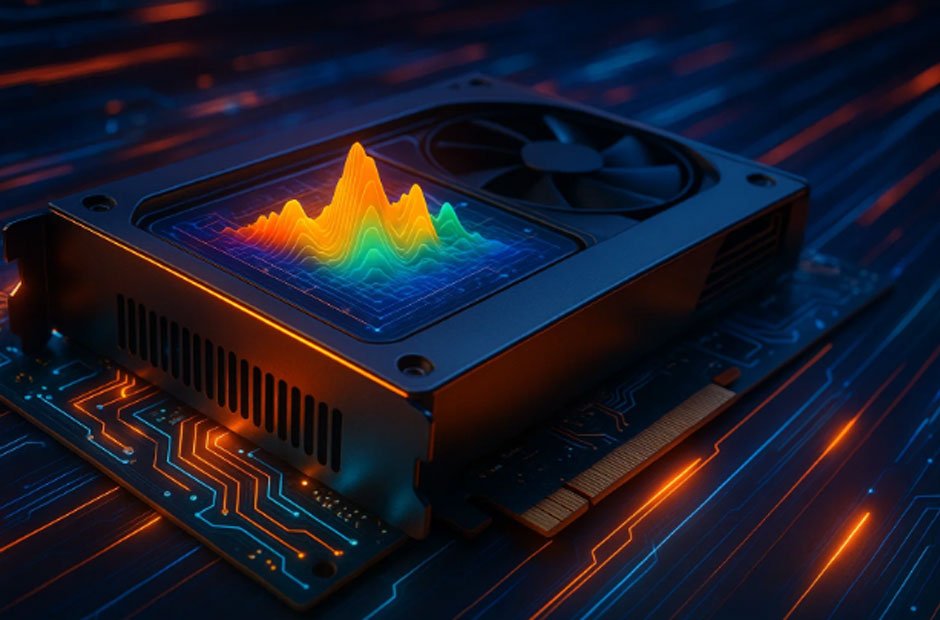How Does a GPU Work? Understanding the Core of Graphics Processing

Ever wondered how your favorite video games look so realistic or how complex visual effects render so smoothly? It all comes down to one powerhouse component inside your computer – the Graphics Processing Unit, or GPU. Understanding how a GPU works opens up a whole new appreciation for the technology that drives gaming, design, and even artificial intelligence today.
A GPU is much more than a chip for rendering images. It’s a parallel computing engine designed to handle millions of calculations simultaneously, transforming raw data into stunning visuals. From your gaming PC to your smartphone, GPUs are the unsung heroes behind smooth animations, detailed textures, and lightning-fast computations.
What Exactly Is a GPU?
A GPU, short for Graphics Processing Unit, is a specialized processor built primarily to accelerate image rendering. While the CPU (Central Processing Unit) handles general tasks like running applications and managing the operating system, the GPU focuses exclusively on tasks involving complex mathematical calculations required to display graphics.
Think of the CPU as a versatile multitasker and the GPU as a highly focused specialist. The GPU’s architecture is optimized for handling repetitive and data-heavy operations, like shading, lighting, and pixel manipulation. This unique design makes it far superior to CPUs when dealing with large-scale visual computations.
How Does a GPU Work Inside Your Computer?
When you launch a video game, edit a 4K video, or use a 3D modeling app, the GPU springs into action. Here’s a simplified explanation of how GPU work unfolds:
1. Data Input and Processing
The process begins when the CPU sends data to the GPU. This data includes details about geometry, textures, lighting, and camera angles. The GPU then translates this information into visual elements using its thousands of cores.
2. Parallel Computing Power
The real magic lies in parallelism. A GPU can contain thousands of tiny cores that execute operations simultaneously. Each core works on a small portion of a larger problem, dramatically speeding up the process. This is why GPUs excel at rendering graphics – they process multiple pixels or vertices at the same time.
3. Shaders and Pipelines
The GPU uses shaders—small programs that dictate how pixels and vertices behave. Vertex shaders handle the position and shape of objects, while fragment shaders define color, texture, and lighting. These shaders operate through a pipeline system, which ensures smooth and efficient rendering from input data to final image output.
4. Frame Rendering and Display Output
After all these calculations, the GPU compiles the processed data into a complete frame. This frame is then sent to your monitor, resulting in the seamless visuals you see during gameplay or design work.
The Architecture Behind GPU Work
A GPU’s architecture is the backbone of its efficiency. It’s composed of multiple elements that work together to ensure fast and accurate visual processing.
Cores: The Heart of GPU Work
GPU cores are the key to parallel processing. While a CPU might have 4 to 16 cores, a modern GPU can have thousands. Each core executes simple mathematical operations rapidly and concurrently, allowing for massive throughput.
Memory and Bandwidth
Graphics cards come with their own dedicated memory known as VRAM (Video RAM). This memory stores texture data, frame buffers, and rendering instructions. Higher VRAM and bandwidth allow smoother performance at higher resolutions.
Cooling Systems
Because GPUs perform intense calculations, they generate a significant amount of heat. Advanced cooling systems – including fans, heat pipes, and even liquid cooling – keep the GPU operating at optimal temperatures for sustained performance.
GPU Work Beyond Gaming
While GPUs were originally designed for gaming and graphic-intensive tasks, their capabilities extend far beyond that. Modern GPUs are integral to fields like machine learning, data analysis, and scientific simulations.
In Artificial Intelligence
AI relies on training algorithms with vast amounts of data. GPUs accelerate this process by performing parallel computations efficiently. Frameworks like TensorFlow and PyTorch are heavily optimized to leverage GPU power.
In Video Editing and Animation
Video editors and 3D artists benefit from GPUs that handle rendering, encoding, and visual effects much faster than CPUs alone. This allows for real-time editing and faster project completion.
In Cryptocurrency Mining
GPUs are also used in cryptocurrency mining because they can process multiple hashing operations simultaneously, increasing mining efficiency.
Different Types of GPUs
GPUs can be broadly classified into two categories based on their integration and usage.
Integrated GPUs
Integrated GPUs are built into the CPU and share system memory. They are energy-efficient and ideal for basic computing tasks, such as video playback, light gaming, or web browsing.
Dedicated GPUs
Dedicated GPUs, also known as discrete GPUs, have their own VRAM and offer significantly higher performance. They’re commonly used in gaming PCs, workstations, and servers for heavy workloads.
If you’re looking to upgrade your system, exploring options for the best GPU for PC can make a huge difference in performance, whether for gaming, creative work, or AI applications.
Key Components That Influence GPU Performance
Understanding what determines GPU performance can help you choose the right model for your needs.
Clock Speed
Measured in MHz or GHz, the clock speed determines how fast each GPU core can process data. Higher clock speeds generally mean better performance.
Core Count
More cores mean better parallelism. However, balance is essential, as not all applications can fully utilize high core counts.
Memory Size and Bandwidth
VRAM affects how much data your GPU can handle at once, while bandwidth affects how quickly it can access that data.
Architecture and Efficiency
Newer GPU architectures often bring better performance per watt, meaning they deliver more processing power while consuming less energy.
The Evolution of GPU Work
GPUs have evolved significantly since their inception. Early models were limited to simple 2D rendering, but modern GPUs support advanced techniques like ray tracing, AI upscaling, and real-time global illumination.
Manufacturers like NVIDIA, AMD, and Intel continuously innovate, pushing the limits of GPU technology with each generation. The introduction of ray tracing, for example, allows for lifelike lighting and reflections, bridging the gap between virtual and real-world visuals.
How GPU Work Impacts Everyday Life
Even if you’re not a gamer or digital artist, GPUs play a huge role in your daily tech experience. Every time you stream high-definition video, use augmented reality apps, or browse visually rich websites, your GPU is silently working behind the scenes.
In cloud computing and data centers, GPUs accelerate massive workloads that power everything from language models to virtual simulations.
The Future of GPU Work
The future of GPUs looks incredibly promising. As computing becomes more visual and data-driven, GPUs will continue to dominate the landscape. We can expect further improvements in performance, power efficiency, and AI integration.
Emerging technologies like quantum computing and edge AI may also leverage GPU advancements to achieve faster, smarter, and more adaptive processing solutions.
Conclusion
Understanding how GPUs work helps us appreciate the engineering brilliance that powers modern computing. From enhancing gaming realism to accelerating AI computations, GPUs have become the cornerstone of visual and parallel processing technology.
Whether you’re a gamer, a data scientist, or simply a tech enthusiast, knowing the mechanics of GPU work helps you make informed decisions – from upgrading your setup to optimizing performance for specific tasks.
The next time you admire a beautifully rendered scene or experience seamless graphics on your device, remember – your GPU is working tirelessly behind the scenes, transforming digital data into stunning visual reality.
Last modified:

